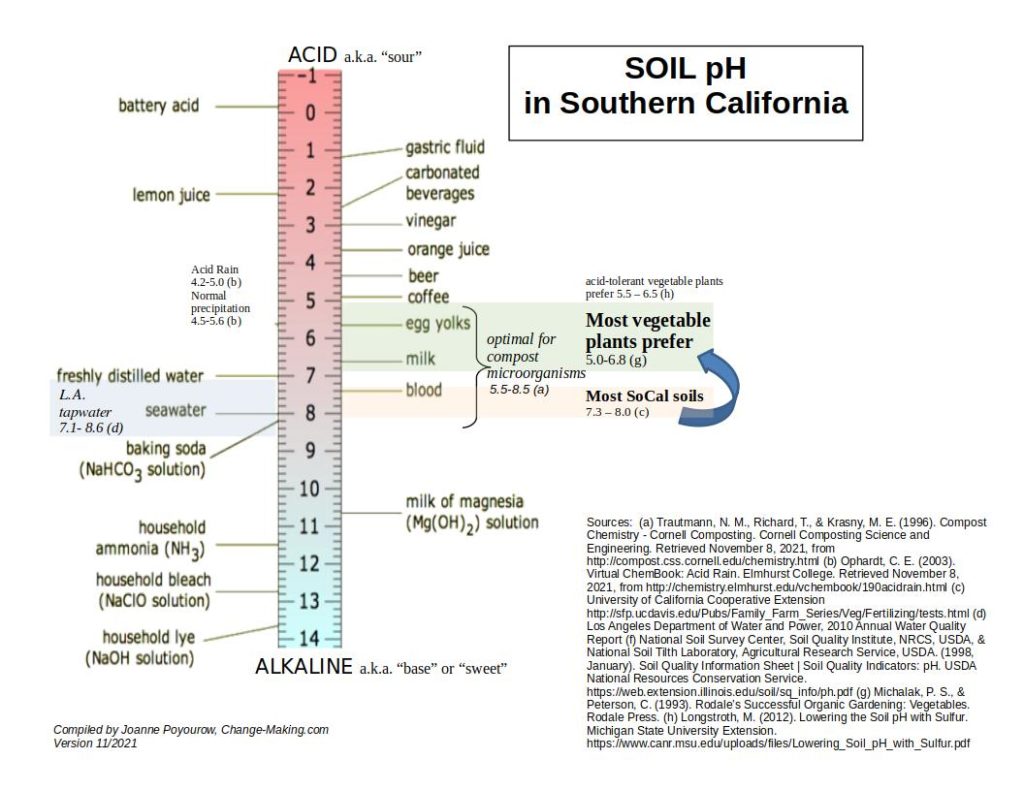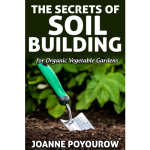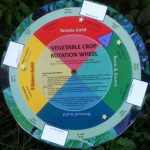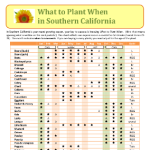
Soil pH in Southern California
I’ve been thinking about soil pH lately – particularly since the oven project at the Garden will be creating an ongoing supply of wood ash.
pH is a measurement of the acidity or alkalinity of your soil. “Soil pH influences the solubility of nutrients. It also affects the activity of micro-organisms responsible for breaking down organic matter and most chemical transformations in the soil. Soil pH thus affects the availability of several plant nutrients.” (1)
Here in Southern California, for the most part, we have alkaline soils, like all soils west of the Mississippi. “Soil pH along most of the California coast north of Los Angeles ranges between 7.3 and 8, which is generally higher than many edible and ornamental plants prefer. In some cases, availability of micronutrients such as iron is severely limited in soils above pH 8, leading to deficiency symptoms in plants.” (2)
Here in Southern California our water supply is alkaline as well. Our water is imported over long distances. As it travels, it picks up naturally occurring dissolved gasses and minerals. Our metropolitan water supplies are quite alkaline, thus as we water our gardens with tap water, we amplify the existing alkaline conditions.
Nearby concrete can also add to the alkalinity of our urban growing spaces. Over time, concrete leaches lime into the surrounding soil, and since lime is highly alkaline, this process will contribute to making your garden soil more alkaline. Cinderblocks or urbanite will do this too.
In the case of greywater, most soaps tend to be alkalizing (even the biodegradable ones). As you use these materials, be aware of your garden’s increased need for more-acidic ingredients.
The general goal is to maintain garden soil close to neutral or slightly acid. Where East Coast gardeners worry they might make their soil “too acidic,” here we encounter the complete opposite end of the spectrum. Here in Southern California in general, ours is a continual project of bringing more acidic elements into our soil, simply to keep our soils in the neutral-to-slightly-acidic pH range which live soil organisms crave.
You’ll see some pH recommendations in East Coast garden books, but be wary: they are dealing with very different circumstances than we are! For instance, the East Coast folks add lime, wood ash, and sulphur. UC Extension tells us “No lime applications are necessary or desirable on most of California’s soils.”(3)
Tips for So Calif
- never add lime or wood ash to your soil or compost
- continually seek to add “more acidic” items to your compost and soil
For a how to do free soil testing, download my info sheet D-I-Y Soil Testing.
Diagram of So Calif soil pH
Here is a diagram I created to illustrate our unique situation for growing vegetables given the soil pH in Southern California.

This is all part of the new revision and ebook version of my booklet “Soil Building”
Sources: (1) Soil Indicators and Function. (2013, February 13). US Dept of the Interior, Bureau of Land Management. http://www.blm.gov/wo/st/en/prog/more/soil2/soil2/indicators.html (2) Webb, C. M. (2010, September 16). Soil pH reduction after applying amendments. UC Cooperative Extension, Ventura County, UCANR Blogs. Retrieved November 8, 2021, from https://ucanr.edu//blogs/blogcore/postdetail.cfm?postnum=3425 (3) “Soil Tests,” UC Small Farm Program, University of California Cooperative Extension, http://sfp.ucdavis.edu/pubs/Family_Farm_Series/Veg/Fertilizing/tests/ (a) Trautmann, N. M., Richard, T., & Krasny, M. E. (1996). Compost Chemistry – Cornell Composting. Cornell Composting Science and Engineering. Retrieved November 8, 2021, from http://compost.css.cornell.edu/chemistry.html (b) Ophardt, C. E. (2003). Virtual ChemBook: Acid Rain. Elmhurst College. Retrieved November 8, 2021, from http://chemistry.elmhurst.edu/vchembook/190acidrain.html (c) University of California Cooperative Extension http://sfp.ucdavis.edu/Pubs/Family_Farm_Series/Veg/Fertilizing/tests.html (d) Los Angeles Department of Water and Power, 2010 Annual Water Quality Report (f) National Soil Survey Center, Soil Quality Institute, NRCS, USDA, & National Soil Tilth Laboratory, Agricultural Research Service, USDA. (1998, January). Soil Quality Information Sheet | Soil Quality Indicators: pH. USDA National Resources Conservation Service. https://web.extension.illinois.edu/soil/sq_info/ph.pdf (g) Michalak, P. S., & Peterson, C. (1993). Rodale’s Successful Organic Gardening: Vegetables. Rodale Press. (h) Longstroth, M. (2012). Lowering the Soil pH with Sulfur. Michigan State University Extension. https://www.canr.msu.edu/uploads/files/Lowering_Soil_pH_with_Sulfur.pdf
If you enjoyed this post, please consider making a small donation to support my ongoing work. — thanks!


